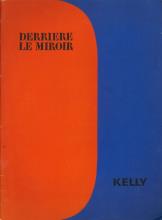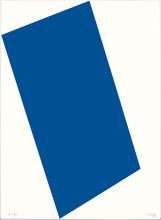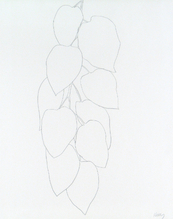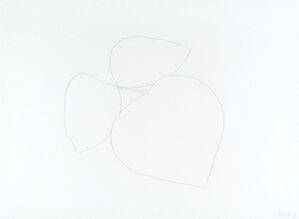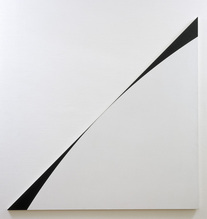Red Curve II
Ellsworth Kelly
The abstract painting Red Curve II fights against a figure/ground relationship with its simplified form and colour. Yet the curve can be read as recession and imply a landscape or horizon. Ellsworth Kelly did, in fact, look to nature to find the structures he employed in his art. In 1970 the artist left New York City to move to the country. Kelly saw shapes that interested him in shadows cast over landscape and architecture. He often took those contours directly and enlarged them in his paintings. By reducing these shapes he intensified their formal quality. In their sobriety the forms become very complex in their visual effect. Kelly asserted: “Instead of making a picture that was an interpretation of a thing seen, or a picture of invented content, I found an object and ‘presented’ itself alone.” The sharp edge and precise delineation of colour led to Kelly’s association with a style referred to as Hard-Edge.

Makers
Collection
Production date
1972
Library
Click here to view 11 related documents
Dimensions
114.5 x 426.5cm.
Material
oil on cotton
Object number
A 35757


